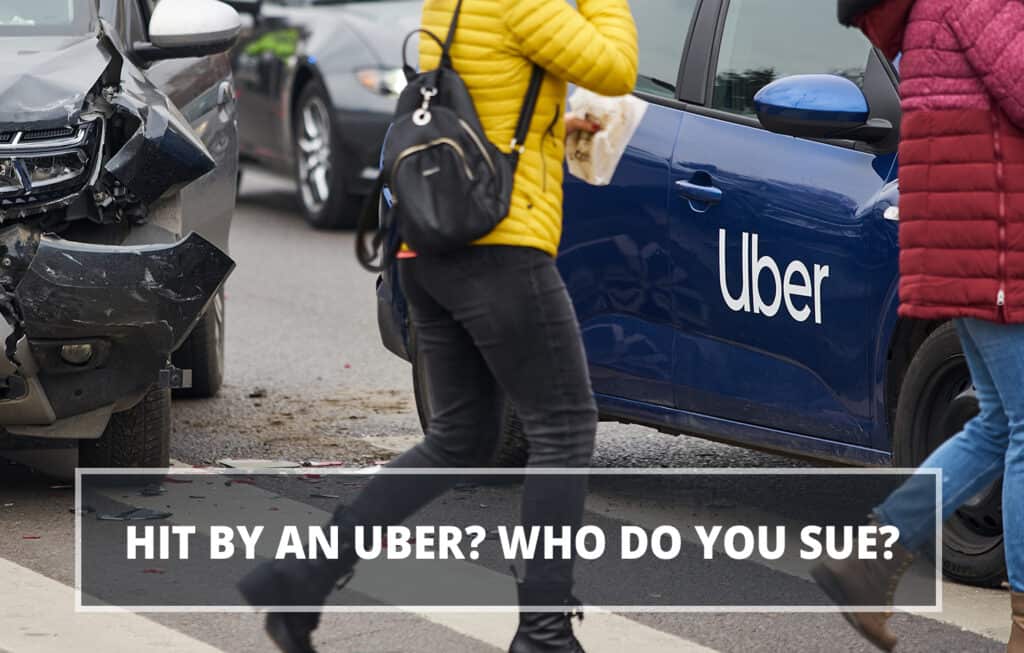The short answer to this question is, if you were hit by an Uber, you sue Uber because of the respondeat superior rule. The long answer to this question is more complicated.
Between 1985 and 2010, the number of fatal motor vehicle crashes dropped almost every year. Then, in 2010, that trend reversed. The number of fatal motor vehicle crashes has increased almost every year, especially in 2020 and 2021. Uber began operations in 2010. The sudden reversal may not be not coincidental.
Uber has also become one of the world’s most valuable corporations. So, the company has almost unlimited resources with which to fight injury claims. Some companies settle injury cases quickly and quietly to keep them out of the headlines. But Uber has a brand to protect.
Duty of Care
Uber is ultimately responsible for damages in these cases. But a negligence claim begins with a duty of care, a question that focuses on the tortfeasor (negligent driver).
Uber drivers, like most other motorists, have a duty of reasonable care. They must go out of their way to avoid accidents. “Going out of your way” usually means slowing down when the weather is bad, not speeding, not texting while driving, etc.
Breach of Care
Establishing a breach of care is the second step in an Uber lawsuit.
- Aggressive Driving: Uber pays drivers not by the hour, but by the trip. This pay scheme could encourage drivers to speed. Excessive speed increases the risk of a wreck and the force in a collision.
- Impaired Operation: Uber encourages drivers to use GPS devices, which can be dangerously distracting. These gadgets, even if used in hands-free mode, encourage drivers to take their minds off driving, their hands off the wheel, and their eyes off the road.
The aforementioned duty of reasonable care extends to all areas of passenger safety, not just vehicle operation.
Drivers have a legal responsibility to pick up and drop off passengers at safe locations, as opposed to convenient locations. The same thing applies if the driver terminates the ride early. Uber drivers cannot simply stop their vehicles and order passengers to get out. They must proceed to safe locations first.
Vehicle collisions are unintentional torts. Drivers intend the conduct but not the result. Intentional torts, namely assaults and sexual assaults, are also a problem. In fact, they may be a bigger problem than vehicle collisions. According to Uber’s latest safety report, drivers committed almost 4,000 sexual assaults over a two-year period.
The respondeat superior rule doesn’t apply to sexual assaults, which clearly are not in the ordinary course of business. However, these victims can still sue Uber, at least in most cases.
Negligent hiring is hiring an incompetent person, such as a person with a criminal record, to do a job. Negligent supervision is failing to respond appropriately to prior misconduct reports.
Compensation Available
Crash victims and other injury victims are entitled to compensation for their economic losses, such as medical bills, and noneconomic losses, such as pain and suffering.
Calculating the amount of economic losses is not as simple as pushing buttons on a calculator. Medical expenses, which are usually the largest category of economic losses in passenger injury claims, are a good example.
A personal injury attorney must prove, by a preponderance of the evidence, that prior medical bills were reasonably necessary.
To determine a reasonable amount of noneconomic losses, an attorney usually multiplies the economic losses by two, three, or four, depending on the facts of the case and a few other factors, such as the victim’s eagerness to settle early, if any.
Uber is legally responsible for car crash and other injury damages, at least in most cases. For a free consultation with an experienced personal injury lawyer, contact Napoli Shkolnik.
